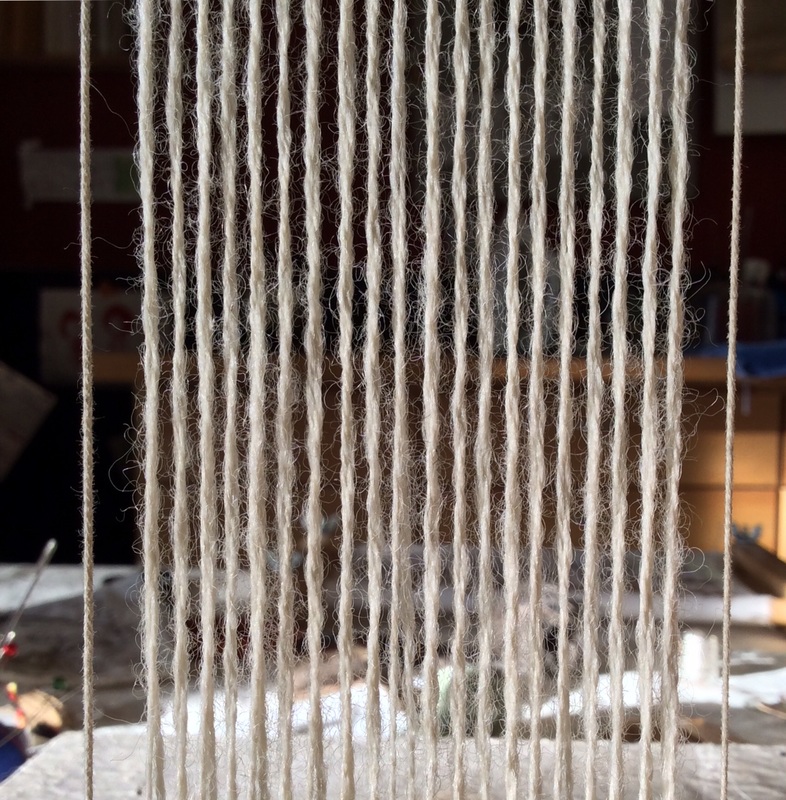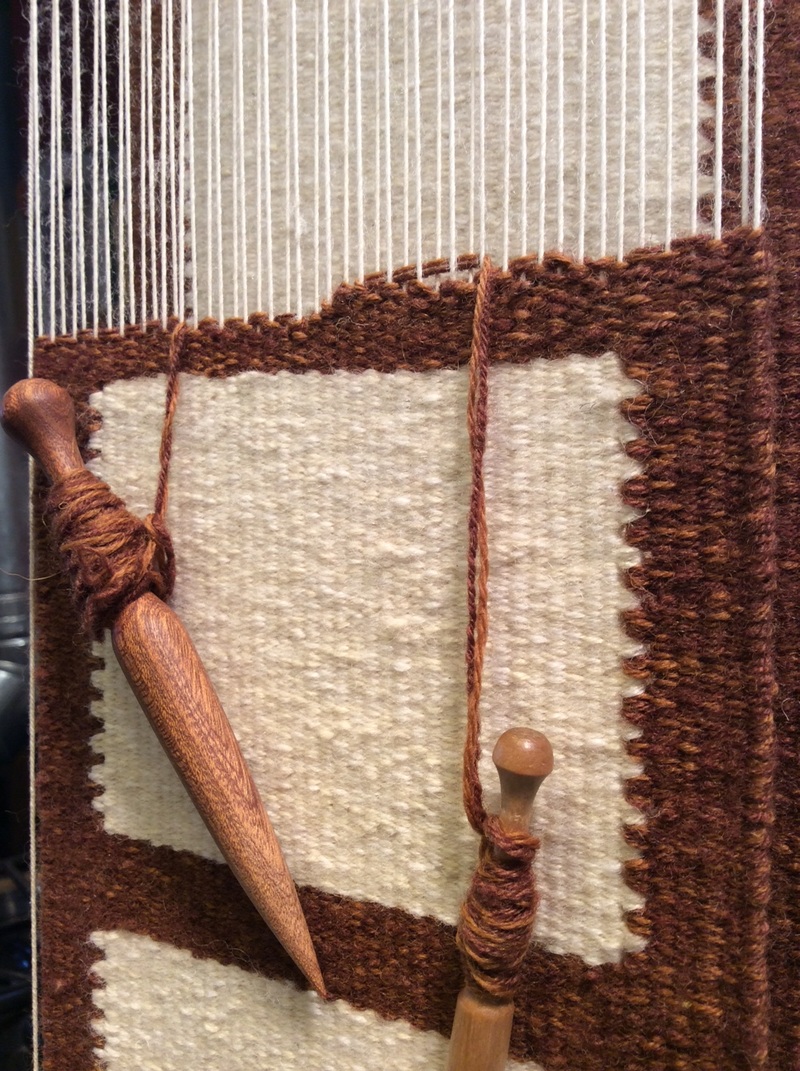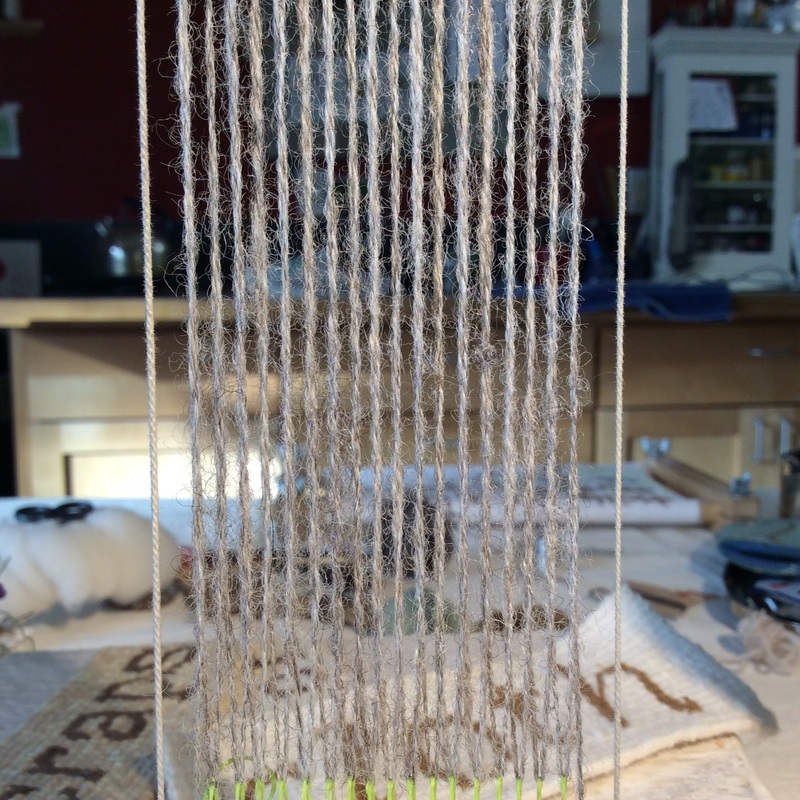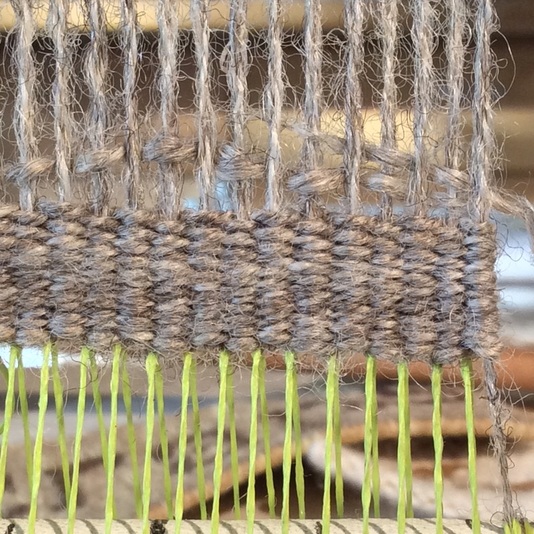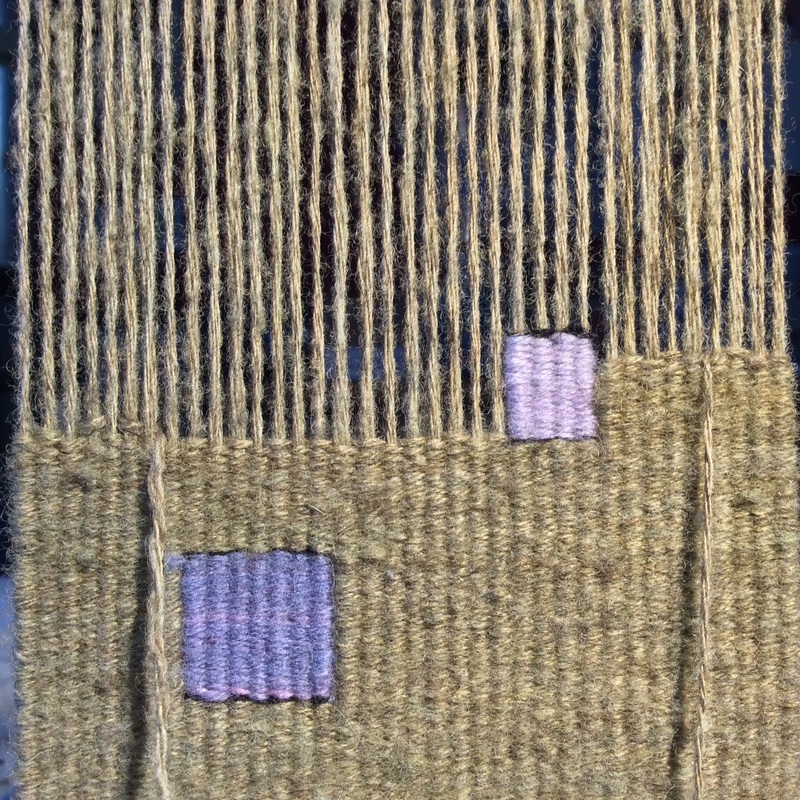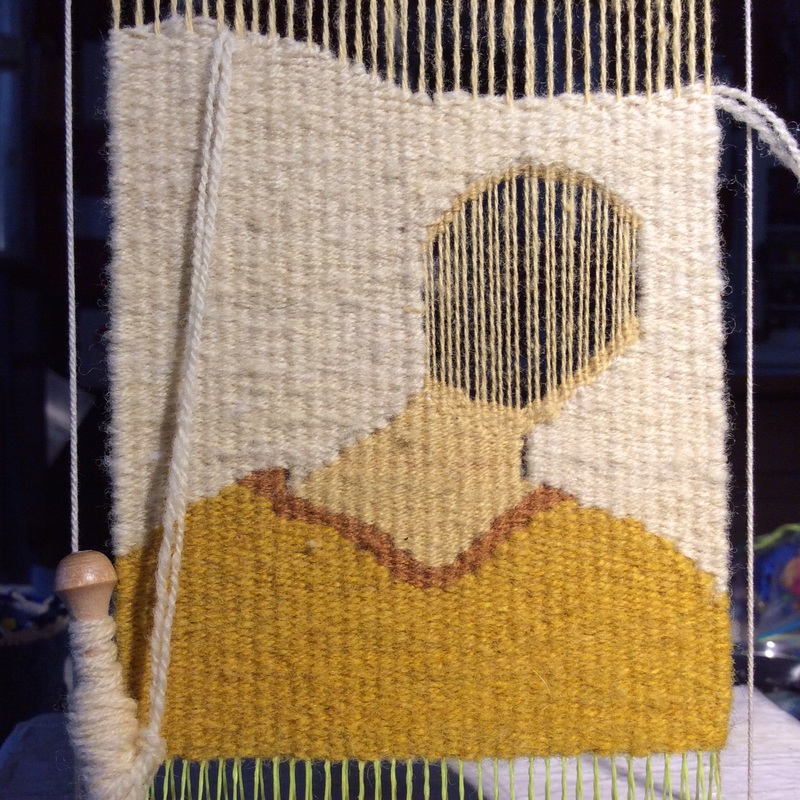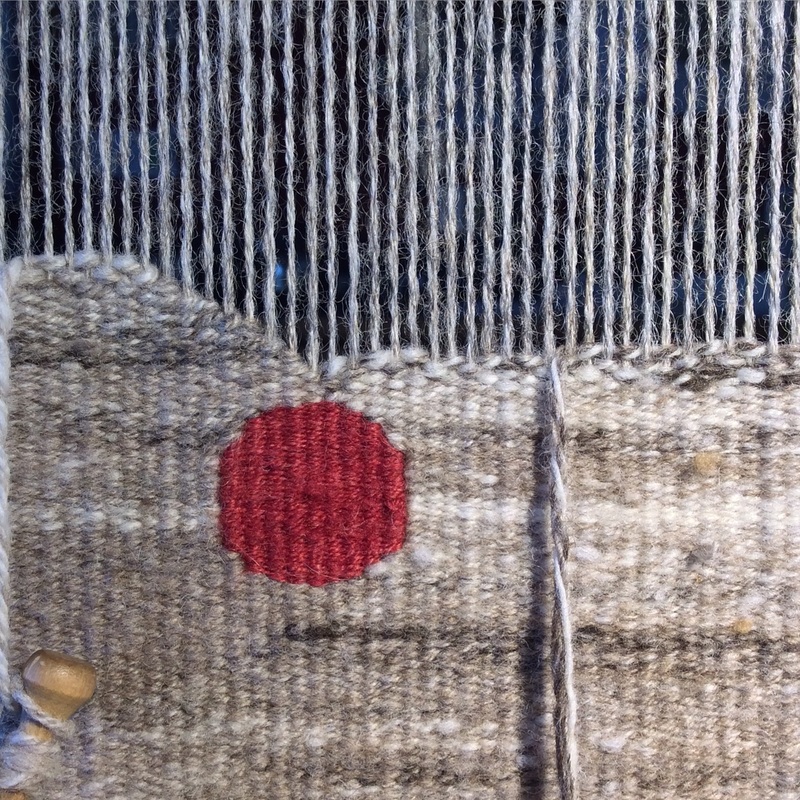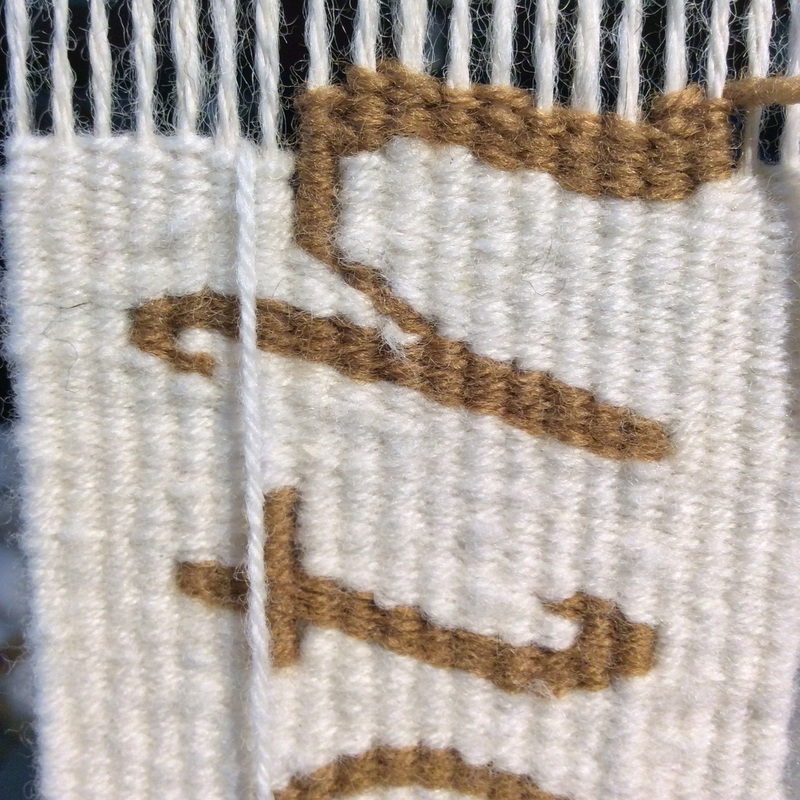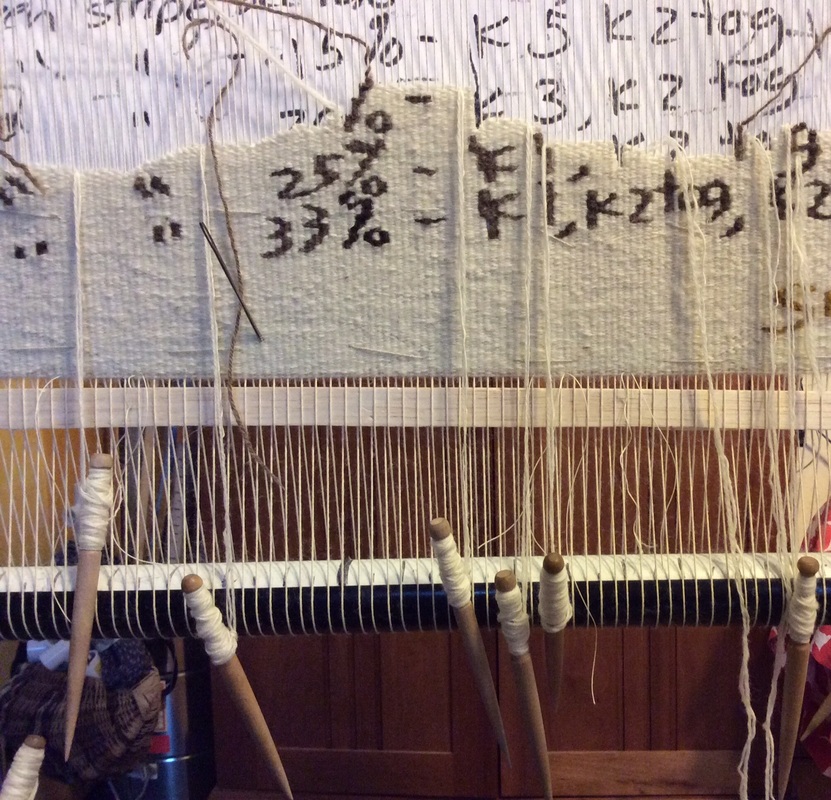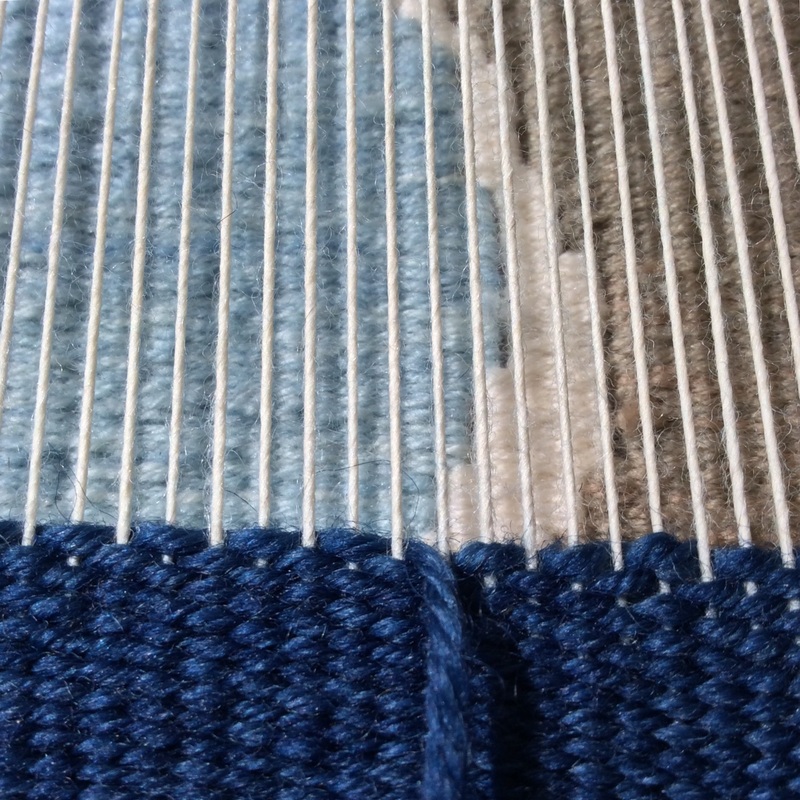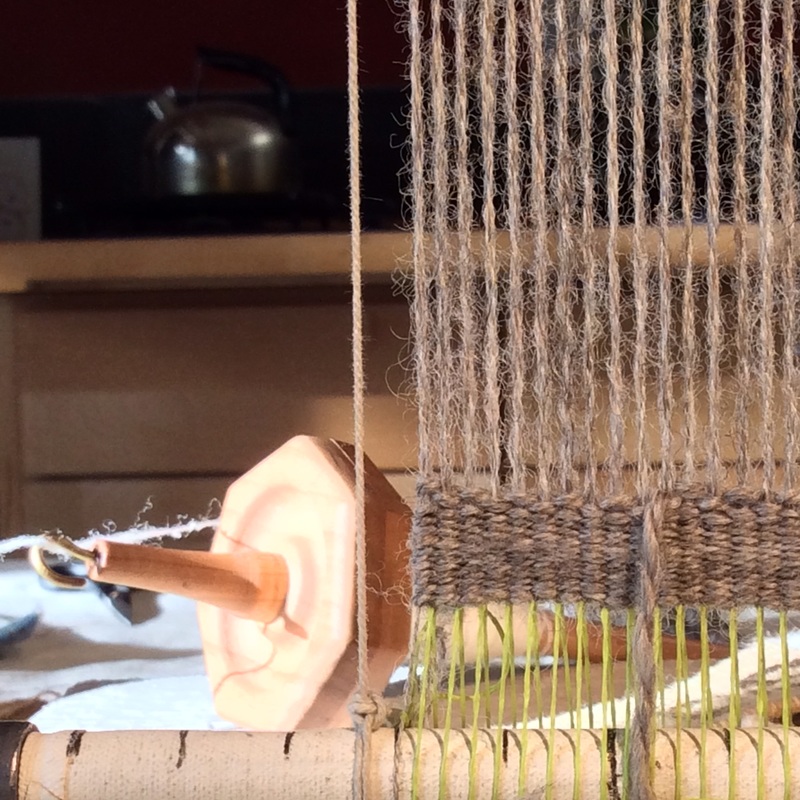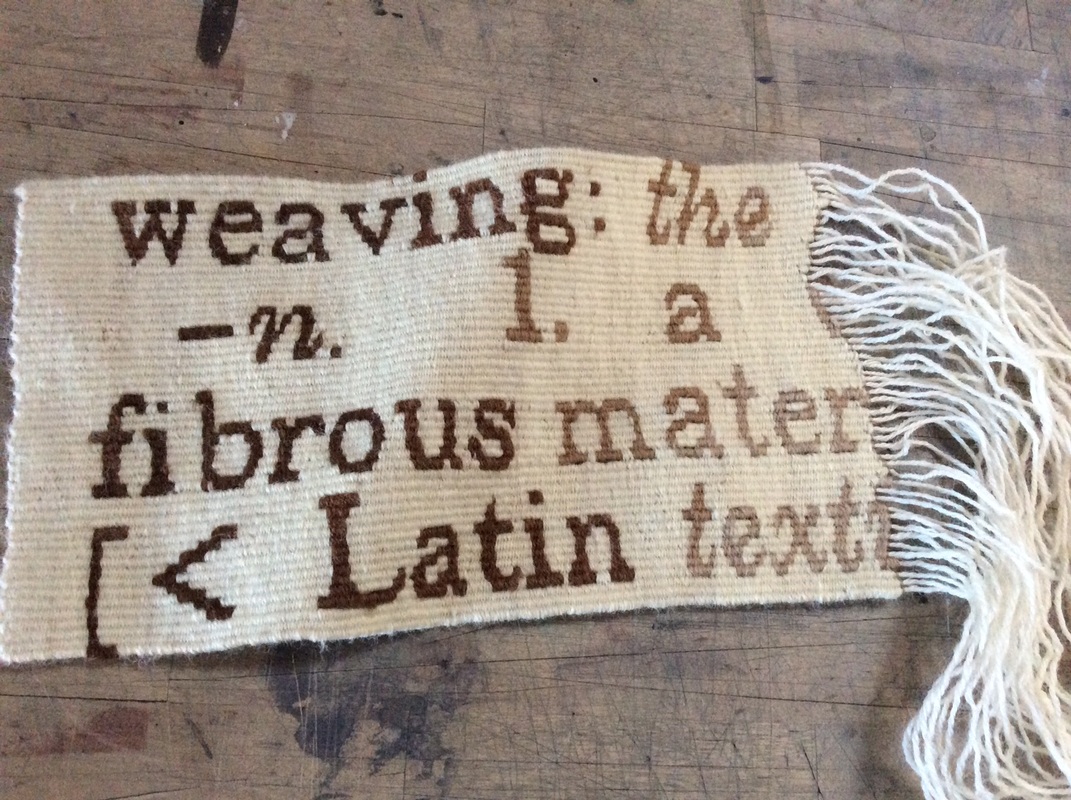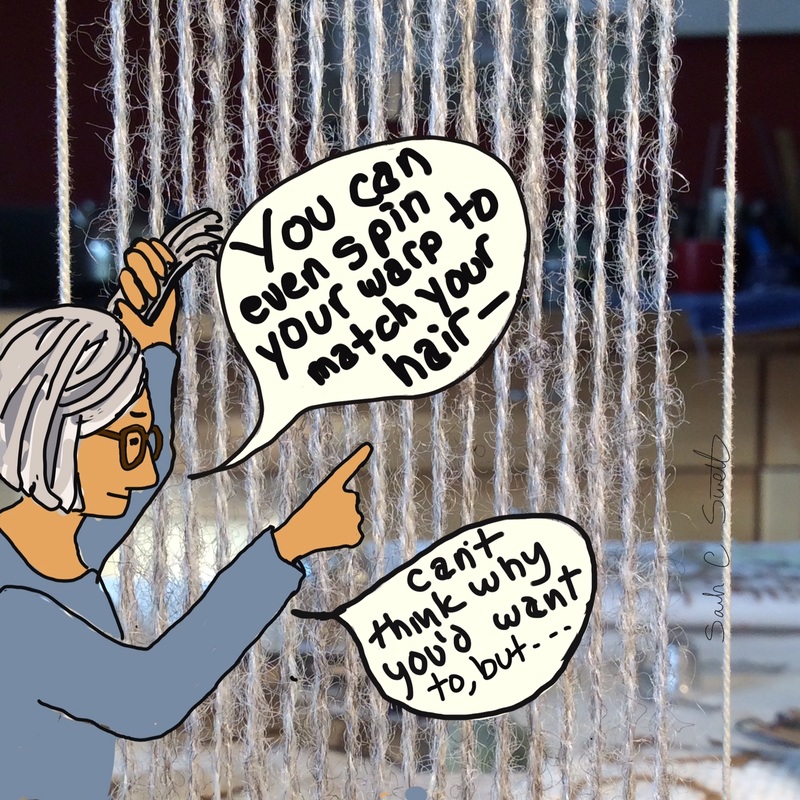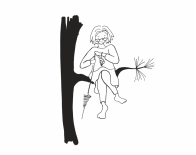But now that I've put all these photos in place,
measured the grist of various yarns on my McMorran Balance,
and written the captions,
it seems self explanatory.
What's not to love?
Might as well put something in all the text blocks I carefully inserted.
1. Variety: Many fleece types seem to work
as long as the warp is even and well spun.
For larger tapestries, long staple, inelastic fibers are best
but as you can see from the captions below,
almost anything goes with smaller pieces--
just be prepared for stretch in your warp (and maybe sample... ugh).
Wool warp tends to be hairy, so the little wisps of warp fiber grab the little wisps of weft
and everything stays in place.
NOTE--don't cut the weft with scissors. This makes a blunt end which will want to pop to the surface of front or back no matter what you do! Untwisting and separating is best, followed by breaking or, if necessary, feathering the end of your yarn with scissors
Warp and weft work together to make a structurally sound fabric.
In my experience, cotton or linen warp remains separate from the weft
and can be moved around -- its as though the weft is 'hung' on the warp
but not really part of it.
Some people really like this.
But it freaks me out.
No seine twine hang nails
Wool can handle acid but doesn't like alkaline.
Cotton and Linen can handle alkaline but don't like acid.
Makes storage and cleaning tricky.
NOTE: I'm NOT a conservator, so if you are, or know more about this aspect of things, I'd love to hear your thoughts
The little hairy bits grab each other, anchoring the weft in place
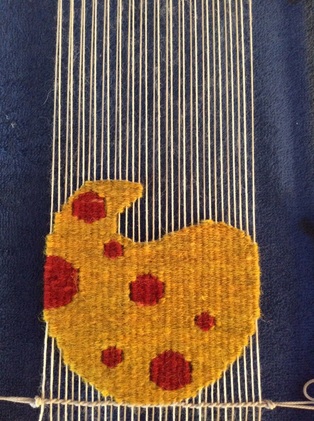 Brown Sheep Wool Warp as above, 9 epi
Brown Sheep Wool Warp as above, 9 epi On this tapestry I used a needle to work the warp ends into the back of the tapestry.
This is perfectly possible to do with a cotton or linen warp of course, but some of my warp ends were VERY short (those on the inside curve had to be cut in half), and I was happy to know that once I had those 1/4 inch bits of warp anchored into the back, they would stay.
Wet finishing and a little agitation helps, of course.
NOTE: this tapestry is one tiny part of Line Dufour's
ongoing International Tapestry Project,
Fate, Destiny and Self-Determination.
All are invited to participate.
You too!
Subjective, of course.
But everything I write is subjective, so...
As a spinner, I can make my warp with the materials at hand
A big plus for me.
(especially with a little deliberate overtwist in the plying)
and with a little forethought, the finished edges can match the body of your tapestry.
Wow -- 11 reasons.
I should put that in the title of the post.
11 REASONS WOOL WARP WILL CHANGE YOUR LIFE!!!!!
Kind of like a tabloid newspaper.
Never Mind.
Have a lovely week!
